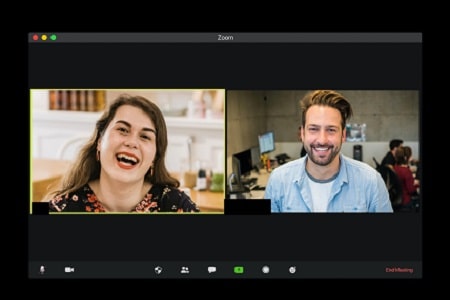Improve your communication, boost creativity and morale, reduce stress - the Fun Way!!
People want to have fun. Lighten up the workplace and you'll get results fast!
In our July session, Dr. Terry Paulson argues that humor is a great management tool. Making people laugh does three key things:
- it helps in communication and relationship building
- it reduces stress, both personal and in the workplace
- it fosters creativity
Communicate with Humor
“Of all the communicative strategies that leaders use, humor is the most promising, but least understood.” - Academy of Management Journal
We're bombarded with communications. We're sinking under the weight of emails, meetings, presentations, not to mention all the other non-work stuff that creeps in from our colleagues and over the internet. Apart from an "URGENT" email from our boss, what else grabs our attention as much as something funny? When you see people laughing, don't you want to know what they're laughing about?

So when we make a sales presentation, or sit through a long but necessary meeting, a great way to focus people's attention and build rapport is by adding some fun.
“Humor builds rapport, makes the target audience want to listen more, makes information more memorable, distracts people from thinking about counter arguments, relaxes the audience, and makes them more receptive to messages.” And it pays dividends. “Playful joking increases the likelihood of financial concessions during a negotiation.” - Persuasive Communication, Stiff & Mongeau
Relieve Stress with Humor
Laughter is a personal stress buster. Laughter lowers our levels of stress and fights off harmful diseases by altering the levels of cortisol in our bodies.
Laughter also creates a bond between individuals. When we laugh as a group or with someone else, we feel more connected to each other, and it can alleviate some of the social stress that builds up in the workplace. Humor keeps people focused on solutions rather than problems (brainstorming vs. “blame-storming”).
Drive Creativity with Humor
To anyone who has worked in a truly innovative workplace, the relationship between creativity and humor is obvious. In fact, a survey by 3M as reported in Training Magazine, found that two-thirds of respondents listed play or humor as their favorite way of stimulating creativity at work. In another study, volunteers who watched humorous videos generated more creative ideas than those who didn’t screen funny programs.
"Laughter provides a 'train wreck' for the mind, suspending thought and being in the moment, which opens the channels for innovative, creative thinking. You can’t think while you are laughing. Try it. Try doing a calculus problem (or move a couch) while in the throes of laughter. It can’t be done. But what it does do is metaphorically open the cranial channels and allow for creative, innovative thinking to emerge." - A whack on the side of the head: How you can be more creative, Roger Von Oech
"But you can't teach 'Funny'!"
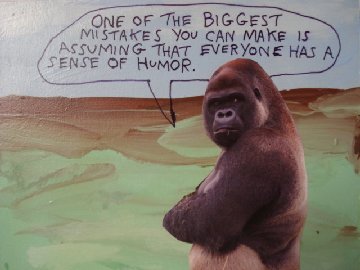
True - you can't teach someone how to have a sense of humor. There are some things about being funny - timing, judgment, wit - that it's difficult to learn from a course. A sense of humor is not something we can plan, but rather it's something we develop individually over time.
Terry Paulson points out that using humor as a tool is a skill that you can plan for and learn. There are sources of humor available to all of us. We need to identify and use ones that are timely, tactful and appropriate.
Adding Humor to Meetings and Presentations
- Personal experience. Self-deprecating funny stories often go down well.
- Humorous articles and stories. Something funny you heard on the radio that you can use to illustrate a point.
- Pictures or cartoons. Google Images or a host of other websites.
- YouTube clips.
- Fun icebreaker games and interactive exercises, adding movement if possible.
- Funny role-play situations as demonstrations
Keep it Appropriate
There's a difference between humor as used by a comedian and humor used as a management tool. Comedians often use sarcasm to create a laugh at someone else's expense. Humor we employ as managers should have an objective - to improve communication, to focus attention, to foster creativity, to relieve stress, to establish commonality, to aid in building relationships.
Sources of humor fall into three main categories or theories, not always appropriate for the workplace:
- Incongruity Theory: We expect one outcome, and something else happens. Incongruity can refer to things that are unexpected or to things that juxtapose two typically incompatible concepts.
- Superiority Theory: We may laugh at jokes that focus on someone else, in particular, mistakes, stupidity, or misfortune. We detach ourselves and laugh. Superiority explains why insults and other humiliations can be quite funny, provided you’re not the one being laughed at.
- Relief Theory: We laugh to release excess nervous energy. Things that make us tense and then cause us to be suddenly amused fall into this theory. Levity sometimes lightens anxiety or tension at work.
Here are some visual examples of each type:
Incongruity



Incongruity humor is tricky at work because people often have different frames of reference: what’s inherently funny to one may leave someone else wondering why that same thing was funny at all. All, some or none of these may be funny and/or relevant to you depending mainly on whether you are familiar with their context.
Superiority

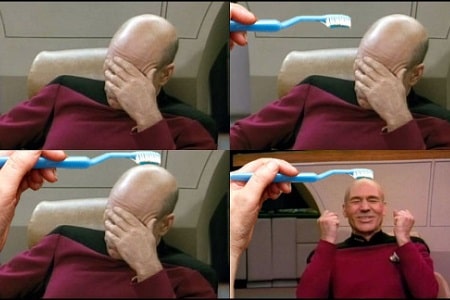

We may laugh at jokes that focus on someone else, in particular, mistakes, stupidity, or misfortune. Never a good idea at work.
Relief
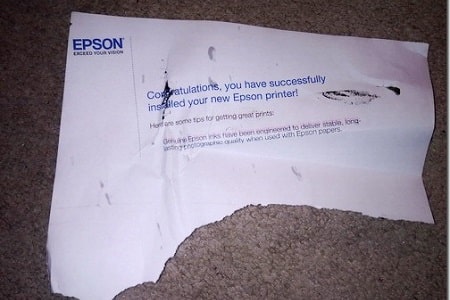
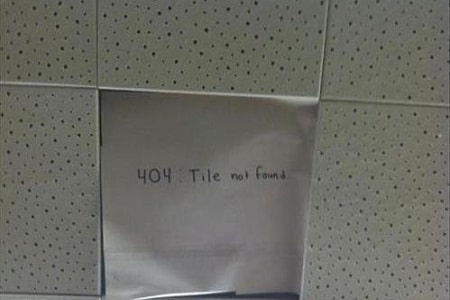

We laugh to release excess nervous energy. Things that make us tense and then cause us to be suddenly amused fall into this theory. Relief humor is often used to lighten anxiety or tension at work and is the type of humor that is most often used appropriately in the workplace.
